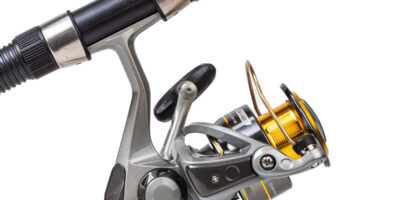Understanding Fishing: A Brief Introduction
Fishing has been an integral part of human life for thousands of years. It provides food, recreation, and a chance to connect with nature. Whether you are experienced or new to fishing, finding the right spot is crucial. Local fishing trips are enjoyable and often reveal hidden gems close to home. This guide will explore different types of fishing, how to find good fishing spots nearby, and some handy tips for beginners and experts alike.
Types of Fishing
Fishing is as varied as the environments it takes place in. Here are some popular types you can explore:
- Freshwater Fishing: This involves catching fish from rivers, lakes, and ponds. Freshwater fishing is accessible and popular worldwide. It includes fishing for species like bass, trout, and catfish.
- Saltwater Fishing: Conducted in oceans and seas, saltwater fishing targets species like marlin, tuna, and sea bass. It includes both deep-sea and coastal fishing.
- Fly Fishing: Known for its technique, fly fishing uses lightweight lures called flies. It’s common in rivers and streams where fish like trout and salmon are prevalent.
- Ice Fishing: Popular in colder regions, ice fishing involves drilling holes in the ice and fishing through them. It’s common in northern parts of the United States and Canada during winter months.
Finding Local Fishing Spots
Searching for fishing locations nearby can be an adventure in itself. Technology and local knowledge are helpful resources. Here are some methods to pinpoint good fishing spots near you:
- Maps and Apps: Tools like Google Maps or specialized apps like Fishbrain and Navionics highlight popular fishing sites. They often include user reviews and tips.
- Local Tackle Shops: Staff at these shops are usually avid anglers themselves. They can offer advice about nearby fishing locations and what fish are currently biting.
- Online Forums and Communities: Websites and Facebook groups offer platforms for fishing enthusiasts to share experiences. These are great for discovering lesser-known local spots.
- State Parks and National Reserves: These areas often have designated fishing zones. Check their websites or visitor centers for maps and regulations.
Understanding Local Regulations
Every region has specific rules for fishing. It’s essential to know these to avoid fines and for conservation efforts. Key aspects to consider include:
- Licensing: Most places require a fishing license, and not having one can result in stiff penalties. Licenses are often available online or at fishing shops.
- Seasonal Restrictions: Certain fish may only be caught during specific times of the year. This is to protect breeding populations. Check local wildlife department guidelines.
- Size and Bag Limits: Regulations often include the allowable number and size of fish per day. These help maintain fish populations.
Essential Gear for a Fishing Trip
Fishing success often depends on having the right equipment. Essentials for a typical fishing trip include:
- Rod and Reel: The cornerstone of any fishing gear. The choice of rod and reel depends on the type of fishing you plan to do. Consider weight, length, and power.
- Fishing Line: Choose the right line strength, known as test, that suits your target species and water type.
- Bait and Lures: Live bait like worms or minnows are garage staples. Artificial lures mimic prey movements and attract fish.
- Hooks and Weights: Select the appropriate size and type of hook depending on your target species. Weights help your bait sink to desired depths.
- Tackle Box: A sturdy box for organizing hooks, lines, baits, and other small tools.
- Personal Items: Include sun protection, a hat, a first aid kit, snacks, and plenty of water.
Fishing Tips for Beginners
Getting started with fishing doesn’t have to be daunting. These tips will help newcomers find their rhythm:
- Start Simple: Begin with a basic rod-and-reel combo. Freshwater fishing is a good starting point, as it’s less complex.
- Learn the Knots: Knowing a few basic fishing knots can prevent losing big catches and gear. The Palomar knot and improved clinch knot are worth learning.
- Observe and Adapt: Spend some time watching others fish. Pay attention to what they’re using and their techniques. Adapt these to suit your style.
- Be Patient: Fishing requires patience. Some days will be better than others. Enjoy the experience, even if you don’t catch anything.
- Safety First: Always prioritize safety. Wear life vests when necessary and be aware of weather conditions.
Advanced Fishing Techniques
For those looking to hone their skills, mastering advanced techniques can enhance your fishing experience:
- Understanding Fish Behavior: Fish behavior changes with weather conditions, time of day, and seasons. Learning these patterns can improve your catch rate.
- Casting Variations: Techniques like flipping, pitching, and roll casting can increase accuracy and distance.
- Tackle Customization: Modify lures and rigs to suit your fishing environment and target species better.
- Utilizing Technology: Use fish finders and GPS devices to locate schools of fish and navigate accurately.
Community Engagement and Environmental Responsibility
Responsible fishing ensures that our waters remain healthy and accessible for future generations. Here’s how anglers can contribute:
- Catch and Release: This practice helps preserve fish populations. Learn how to release fish properly to minimize harm.
- Participate in Clean-ups: Join local waterway clean-up events. Removing trash from fishing spots keeps them beautiful and safe.
- Respect Wildlife and Local Communities: Follow local guidelines and respect closed areas. Avoid disturbing wildlife and other people enjoying nature.
- Stay Informed: Keep updated with changes in local regulations and environmental news. Participate in forums and discussions that promote sustainable fishing practices.
Recommended Fishing Gear
Garmin GPSMAP 79s Marine GPS – $280.84
Rugged marine GPS handheld that floats in water.
Garmin inReach Mini 2 – $249.99
Compact satellite communicator for safety on the water.
As an Amazon Associate, we earn from qualifying purchases.

Subscribe for Updates
Get the latest articles delivered to your inbox.
We respect your privacy. Unsubscribe anytime.